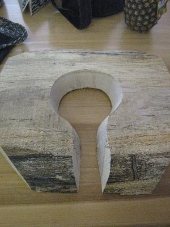We have a small flock (~35 birds) of Ancona ducks, which are really great birds. They forage well, lay well, and the surplus drakes are a decent size for eating. The eggs are large and either white or light blue-green. The birds are medium-sized and colored in variable patterns, kind of like a pinto pony, in black, brown, tan, or "lavender," which makes individual birds highly recognizable. All Anconas (at least in the US) apparently go back to Holderread stock (two birds, actually, though their progeny is so generally healthy that you'd never guess they come from such a genetic bottleneck) and are a critically endangered breed. The Holderread birds have now all been passed on to Boondockers Farm (
http://boondockersnaturals.com/ ), so they are now the main source. We got our initial day-old ducklings from Carol Deppe (
http://www.caroldeppe.com/), whose recent book
The Resilient Gardener has some excellent permaculturish suggestions for raising ducks, and Anconas in particular. I'm not sure if she's still selling ducklings, but she's an excellent and congenial source for information.
My one quibble with Anconas is that they haven't tended to care for eggs and ducklings well, in my experience. We're not sure if this is a breed characteristic or whether it has to do with the fact that at least the past three generations have been incubator-hatched, and they're missing some critical early learning about what mothering entails. Our plan for the next hatching season is to sneak some Ancona eggs under our new Muscovies (reputedly great brooders), so we'll see if they pick up any mothering skills that way.
Different birds will perform differently in different locales, of course, but for western (maritime) Oregon, where I live, I can't recommend Anconas highly enough. They're awesome ducks, and deserve to have more people raising and breeding them.





